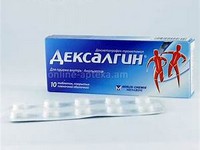Dexketoprofen
CLINICAL USE
NSAID and analgesic
DOSE IN NORMAL RENAL FUNCTION
12.5 mg every 4–6 hoursor 25 mg every 8 hours
PHARMACOKINETICS
DOSE IN RENAL IMPAIRMENT
GFR (mL/MIN)
DOSE IN PATIENTS UNDERGOING RENAL REPLACEMENT THERAPIES
IMPORTANT DRUG INTERACTIONS
Potentially hazardous interactions with other drugsACE inhibitors and angiotensin-II antagonists: antagonism of hypotensive effect; increased risk of nephrotoxicity and hyperkalaemiaAnalgesics: avoid concomitant use of 2 or more NSAIDs, including aspirin (increased side effects); avoid with ketorolac (increased risk of side effects and haemorrhage)Antibacterials: possibly increased risk of convulsions with quinolonesAnticoagulants: effects of coumarins enhanced; possibly increased risk of bleeding with heparins and coumarinsAntidepressants: increased risk of bleeding with SSRIs and venlafaxineAntidiabetic agents: effects of sulphonylureas enhancedAnti-epileptics: possibly increased phenytoin concentrationAntivirals: increased risk of haematological toxicity with zidovudine; concentration possibly increased by ritonavirCiclosporin: may potentiate nephrotoxicity Cytotoxic agents: reduced excretion of methotrexate; increased risk of bleeding with erlotinibDiuretics: increased risk of nephrotoxicity; antagonism of diuretic effect, hyperkalaemia with potassium-sparing diureticsLithium: excretion decreased Pentoxifylline: increased risk of bleeding Tacrolimus: increased risk of nephrotoxicity
ADMINISTRATION
Reconstition
–
Route
Oral
Rate of Administration
–
Comments
–
OTHER INFORMATION
Inhibition of renal prostaglandin synthesis by NSAIDs may interfere with renal function, especially in the presence of existing renal disease – avoid if possible; if not, check serum creatinine 48–72 hours after starting NSAID – if raised, discontinue NSAID therapyUse normal doses in patients with ERF on dialysis if they do not pass any urineUse with caution in renal transplant recipients – can reduce intrarenal autocoid synthesisDexketoprofen should be used with caution in uraemic patients predisposed to gastrointestinal bleeding or uraemic coagulopathies.
